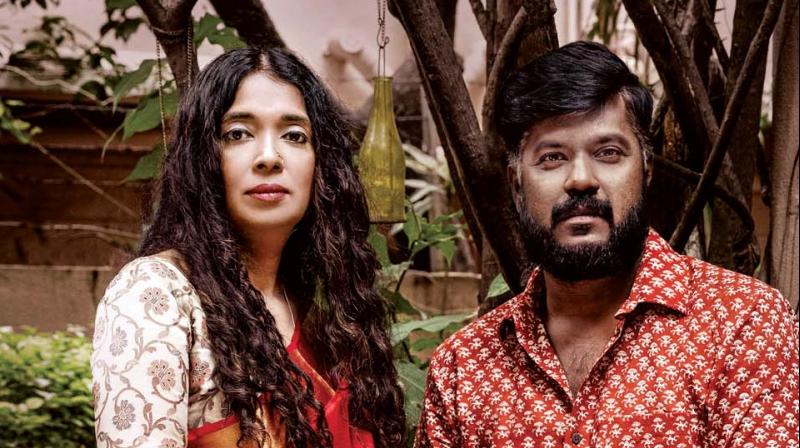Taking ‘stalk’: blooming with the lotus
Equanimity Project is a collaboration between Padmaja\'s botanical assemblages, which were then photographed by her friend, Jayanarayanan Kakkara.

“Do you know how difficult it is to find a lotus leaf,” asks artist Padmaja Chandrasekhar, as her new show, The Equanimity Project opens in the city this weekend. The show is a celebration of the lotus - the flower, its motifs and what it has come to symbolise to mankind - equanimity in the face of great odds, the ability to “remain unaffected by all vicissitudes that come its way,” says Padmaja. Many of these lessons she experienced first hand, for as it turned out, procuring a whole lotus, leaf and all, was notoriously difficult to do in the city, where only the flower is available. She travelled to the outskirts, where lotuses grow in ponds and often, in slush. “I would wade through it all to pick the leaf,” she says.
The Equanimity Project is a collaboration between Padmaja's botanical assemblages, which were then photographed by her friend, Jayanarayanan Kakkara. After graduating with a degree in fine arts in America, she returned to India and entered the advertising world, where she remains today, using her weekends to paint in her studio. The Equanimity Project has been two years in the making but Padmaja's interest goes back to about five years, when she first found herself intrigued by the flower. “Every part of the lotus is interesting - each has character, from the pod and the seed to the leaf. Have you tried to press down on a lotus leaf? It's very hard to do. It was a learning process for me - I wanted to work with the lotus but I wasn't sure in what context.”
An installation with the flowers, perhaps, or maybe paintings, like Georgia O'Keeffe, the artist who so greatly inspired her? “The forms were so beautiful, though, that I decided on building assemblages.” The process is a long one - first, the leaf is placed between two sheets of Plexiglas and left in the son for about two hours a day. The leaf takes up to four months to dry completely. Then, it is dipped in glycerin so it softens and then, dried again. “You have to preserve the veins, the details and make sure insects don't get at it,” says Padmaja. Seeds are removed from the pods and both are dried in silica gel, to remove the moisture while retaining the integrity of the form. “The stems are bulbous on their own and required only drying,” she explains.
Padmaja completed five assemblages with the materials she had, then realised she wanted to do more. “This time, a friend with a resort in Kabini allowed me to pick the lotuses there,” she says. “My house turned into a botany lab, really - it was full of lotuses in different stages!”
Once the assemblages were finished, her collaboration with Jayanarayananan began. “Again, we turned my house into a studio, installed lights - even that was a learning process,” says Padmaja. They used extreme top shots, using a special lens to ensure that the photograph didn't vary from the real thing. These were printed on archival paper, in which the high linen content helps preserve colour better. “I think we were concerned, at ever point, about maintaining the organic nature of the subject.”
The lotus, she says, can grow even in filth, its beauty is resilient. “They grow in water but if you notice, the leaves never become soaked,” she says. “It's able to withstand anything. The lotus as a symbol of purity exists in Hinduism, Buddhism, even in ancient Grecian lore.” And as she worked with the flower, she says, she found that equanimity within, too. “You're working with something so fragile, the process is so detailed, that you have to be calm and balanced to get it right. It was after the first five or six pieces were complete that I decided what the show would be called - The Equanimity Project.”
